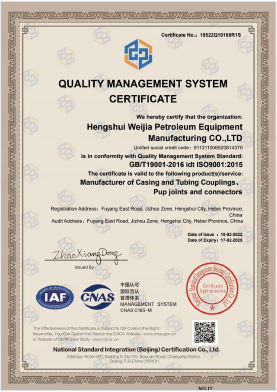- Afrikaans
- Albanian
- Amharic
- Arabic
- Armenian
- Azerbaijani
- Basque
- Belarusian
- Bengali
- Bosnian
- Bulgarian
- Catalan
- Cebuano
- Corsican
- Croatian
- Czech
- Danish
- Dutch
- English
- Esperanto
- Estonian
- Finnish
- French
- Frisian
- Galician
- Georgian
- German
- Greek
- Gujarati
- Haitian Creole
- hausa
- hawaiian
- Hebrew
- Hindi
- Miao
- Hungarian
- Icelandic
- igbo
- Indonesian
- irish
- Italian
- Japanese
- Javanese
- Kannada
- kazakh
- Khmer
- Rwandese
- Korean
- Kurdish
- Kyrgyz
- Lao
- Latin
- Latvian
- Lithuanian
- Luxembourgish
- Macedonian
- Malgashi
- Malay
- Malayalam
- Maltese
- Maori
- Marathi
- Mongolian
- Myanmar
- Nepali
- Norwegian
- Norwegian
- Occitan
- Pashto
- Persian
- Polish
- Portuguese
- Punjabi
- Romanian
- Russian
- Samoan
- Scottish Gaelic
- Serbian
- Sesotho
- Shona
- Sindhi
- Sinhala
- Slovak
- Slovenian
- Somali
- Spanish
- Sundanese
- Swahili
- Swedish
- Tagalog
- Tajik
- Tamil
- Tatar
- Telugu
- Thai
- Turkish
- Turkmen
- Ukrainian
- Urdu
- Uighur
- Uzbek
- Vietnamese
- Welsh
- Bantu
- Yiddish
- Yoruba
- Zulu
Understanding the Importance of Casing and Tubing Connections in Oil and Gas Applications
Casing and Tubing Connections in Oil and Gas Operations
In the oil and gas industry, one of the critical aspects of well construction is the effective connection of casing and tubing. These components are essential for the overall integrity of the well, managing pressures, and ensuring the safe extraction of hydrocarbons. This article delves into the significance, types, and best practices associated with casing and tubing connections.
The Importance of Casing and Tubing
Casing is a series of steel pipes that are inserted into the drilled wellbore. Its primary function is to provide structural stability, isolate different geological formations, and prevent the migration of fluids between layers of rocks. Tubing, on the other hand, is the pipe through which the oil or gas is produced to the surface. The connection between these two components is crucial since any failure can lead to reservoir contamination, blowouts, or loss of production.
Effective casing and tubing connections inform the operational efficiency of a well. They must withstand high temperatures and pressures, which are common in subsurface formations. Additionally, they should be capable of resisting corrosive fluids that may be present, ensuring longevity and reliability.
Types of Connections
Several types of connections are used in casing and tubing operations, each with its benefits and applications
1. Threaded Connections This traditional approach involves cutting threads on both ends of pipes, allowing them to be screwed together. Although they allow for easy installation and disassembly, they may not provide the highest level of sealing, which is critical in high-pressure situations.
2. Welded Connections In welded connections, the ends of the casing or tubing are welded together. This method creates a robust, pressure-tight seal and can handle higher pressures than threaded connections. However, the process requires more time and expertise.
3. Coupled Connections Featuring a coupling that joins two pipe ends, coupled connections provide a robust seal and facilitate easier pipe replacement and assembly. The coupling can be designed to accommodate various pressure ratings and is often used in modern applications.
casing and tubing connections

4. Integral Connections These connections are machined directly on the pipe, providing a continuous and smooth transition from one section to another. This design minimizes the risk of leak paths and is popular in high-pressure applications.
Best Practices for Connections
To ensure the reliability of casing and tubing connections, several best practices should be followed
- Proper Selection of Materials The choice of materials for casing and tubing should consider the environmental conditions, including temperature, pressure, and potential corrosive agents. Specifications from organizations like the American Petroleum Institute (API) guide this selection process.
- Thorough Inspection Every pipe and connection should be rigorously inspected for defects, such as corrosion or threading issues, before installation. Non-destructive testing methods can be employed to identify problem areas.
- Optimal Installation Techniques Following proper installation procedures is vital for achieving a secure connection. This includes adhering to torque specifications and using the right tools to avoid damaging the threads or joints.
- Regular Maintenance After installation, regular monitoring and maintenance of connections are necessary to ensure ongoing integrity. This can include pressure testing and visual inspections to catch potential issues early.
Conclusion
Casing and tubing connections are fundamental components in the oil and gas industry, influencing both operational safety and efficiency. By understanding the different types of connections and adhering to best practices, operators can enhance the longevity and reliability of their wells, ultimately contributing to successful exploration and production activities. As technology advances, the industry will continue to evolve in developing more effective and robust connection methods to meet the ever-increasing challenges of deep-well drilling.
-
Tubing Pup Joints: Essential Components for Oil and Gas OperationsNewsJul.10,2025
-
Pup Joints: Essential Components for Reliable Drilling OperationsNewsJul.10,2025
-
Pipe Couplings: Connecting Your World EfficientlyNewsJul.10,2025
-
Mastering Oilfield Operations with Quality Tubing and CasingNewsJul.10,2025
-
High-Quality Casing Couplings for Every NeedNewsJul.10,2025
-
Boost Your Drilling Efficiency with Premium Crossover Tools & Seating NipplesNewsJul.10,2025







